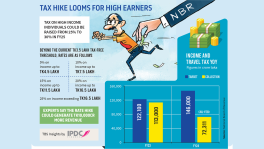Dhaka Wasa builds hope on mega projects
Plans three more treatment plants while the one at Dasherkandi is set to complete by the yearend

The Dhaka Water Supply and Sewerage Authority (WASA) hopes to bring the entire capital city under the wastewater treatment coverage by 2025 when its masterplan will complete.
The agency now can treat merely 20 percent sewage with its lone treatment plant at Pagla. Another five percent is treated by septic tanks at private homes. About 80 percent of the capital's sewage flows directly into the city's rivers and canals untreated, causing serious public health and environmental hazards.
When contacted, Engineer Taqsem A Khan, Managing Director of WASA, himself admitted to the failure of the agency, saying, "It is not acceptable.
"But there are some hard truths behind the matter."
He said, "A big investment is necessary to install sewerage lines all over the city. However, our development partners like World Bank in the past did not fund sewerage projects. They have so far provided loans only to projects for supplying drinking water."
Khan said, "In recent times, we have had notable achievement in supplying drinking water. And thus the development partners are now agreeing to loan us money for the sewerage sectors."
The 14-year masterplan was taken in 2011 and merely 20 percent of its target was achieved in eight years, making city planners skeptical about the project's possibility of meeting the deadline.
The Dhaka Wasa chief executive however said as per the plan, the project of Dasherkandi Sewage Treatment Plant gets underway, and it will be operational by 2021 with the capacity of treating 500 million litres of sewage every day.
The plant will cover Gulshan, Badda, Aftabnagar, Hatirjheel, Tejgaon and its adjacent areas, he further said.
The construction of the Dasherkandi plant began in August last year, three years after the project secured government's approval in 2015.
The China-funded mega sewage treatment plant includes sewage treatment plants, pumping stations and a sewage pipe network with a sewage treatment capacity for serving 50 lakh people of the city's eastern part.
The project was previously scheduled to begin in January 2011 and end in December 2013. But Dhaka Wasa could enter into an agreement with Hydro China only in November 2014 to build the plant.
The construction works of the $415 million project are now scheduled to be completed by December 2019.
Under its masterplan, Dhaka WASA will establish four new sewage treatment plants (STPs) and will upgrade Pagla Sewage Treatment Plant to increase its treatment capacity.
Khan said the World Bank has granted $300 million for new STPs and the same amount for the rehabilitation work of Pagla plant.
The other plants will be built in Uttara, Mirpur and Rayerbazar.
The land survey and other feasibility studies for the Uttara and the Mirpur plants have already been completed.
So far some 75 percent sewage, or 450 million liters of the total 600mld produced a day, is left untreated.
"It is an unforgivable failure of the DWASA," said Urban Specialist and Architect Iqbal Habib.
Pagla plant, which treats merely 20 percent or 120 million liters of the sewage, is a lone such installation for the capital city.
Besides, five percent families use one site sanitary systems by installing septic tanks which treat some 30 million liters of sewage a day.
The rest 450 million liters of sewage goes into rivers through canals and drains every day.
Experts expressed their anxiety over the hazardous situation of the sewerage systems.
MA Matin, General Secretary of Bangladesh Paribesh Andolon, an environmental advocacy group, has put the blame partly on old sewerage lines.
"The lines got damaged in many areas, but the DWASA has failed to repair them on time. As a result, human faeces are contaminating drain waters and even drinking water lines of WASA."
Matin believes the government, who are on a mega project investment spree, should be able to arrange funds to set up sufficient sewerage system had the WASA officials demanded it enough.
According to Masud-ul-Karim, Executive Engineer at Drainage Division of WASA, Uttara, Mirpur, Banasree, Aftabnagar, Badda, Tejgaon and a large portion of Baridhara and Mohammadpur, and many other areas are out of the coverage of sewerage lines.
Sources said sewerage wastes from Badda, Aftabnagar, Tejgaon and Hatirjheel areas going to the Balu river through the Begunbari canal. Similarly those wastes are falling in Buriganga, Turag and Shitalakkha river through various canals and drains.
Sajia Afreen, Executive Engineer at Sewer Division of WASA, said the agency has another master plan to extend its sewage treatment capacity which will be implemented by 2035.
This plant will cover areas beyond the capital city like Gazipur, Savar and Keraniganj.
The Pagla Sewage Treatment Plant, which was constructed in 1978, started its journey in 1991 with the capability of treating 120 million liters of waste a day.
The plant is treating waste through scanning those with sedimentation tanks, said MA Quashem, Director (Development) at DWASA.
He said then it sends the water to a large specialized canal which is known as laguna for three days. During the period, bacteria of the laguna eat the remaining waste from the water and thus the water becomes almost fresh. The water is then pumped out into the Shitalakhya River.


 Keep updated, follow The Business Standard's Google news channel
Keep updated, follow The Business Standard's Google news channel
















